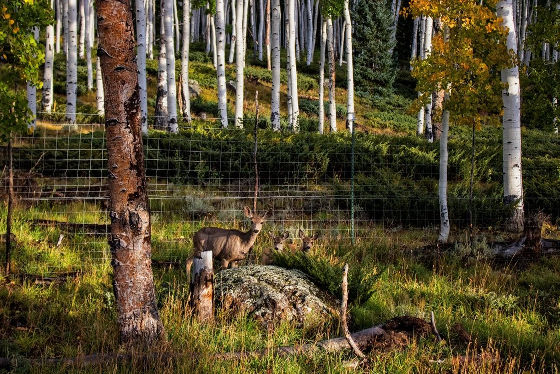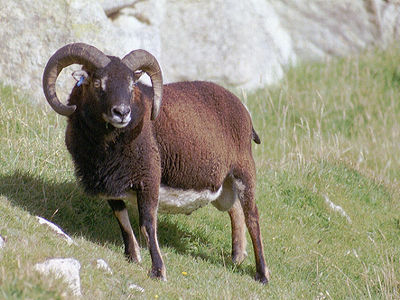'The oldest life in the world' is in a crisis situation

In Fish Lake National Park in Utah, USA, there is a popular tree "Aspen tree" which is similar to white birch which is difficult for most people to recognize as "tree". This tree, also called "Pando", is a life living long enough to infer that scientists are "living for thousands of years to 80,000 years", but such a Pando crisis of life now It is.
Pando, the Most Massive Organism on Earth, Is Shrinking - The New York Times
https://www.nytimes.com/2018/10/17/science/pando-aspens-utah.html

Pando, the world's largest organism, is dying thanks to humans - Quartz
https://qz.com/1428649/pando-the-worlds-largest-organism-is-dying-thanks-to-humans/
Pando in Fish Lake National Park, Utah, is a forest made of about 47,000 cloned trees born from a single tree rhizome. It is thought that it is a huge life born from one tree, and the presumed age is said to be one of the oldest lives on Earth, which is considered "thousands of years to about 80,000 years".
What is the oldest living thing on Earth? - GIGAZINE

Although it is Pand with about 47,000 trees, it is reported in a new research paper that it is declining year by year.
Mule deer impede Pando's recovery: Implications for aspen resilience from a single-genotype forest

Using the latest ground survey and the aerial photographs of the past 72 years, the paper analyzed a massive panda of 106 acres (429 thousand square meters) and a total weight of 13 million pounds (about 590 tons). As a result, it is clear that Pando is decreasing year by year. This decrease is expected to continue if we do not manage deer and cow inhabiting within Fish Lake National Park firmly.
Paul Rogers, Utah State University's ecology scholar and investigator, said, "Pand is a forest that has grown for thousands of years, but now we have a crisis due to human beings It is said. " There are still many mysteries about the reason why Pando got so enormous, and it is said that the influence of the clone tree and the flat land of Fish Lake National Park are influenced.
Pand is not the only case where a single aspen tree grows clones and becomes a forest. Although it is not unusual for large-scale pounds, North America seems to have several forests made of Aspen tree clones like Pando. Aspen tree grows directly from rhizomes in the ground, not from seeds. Thousands or even tens of thousands of cloned trees are growing from a single rhizome, and when Aspen tree is damaged somehow, it instructs the trunk with a hormone signal "It is time to clone" and creates a new clone tree ... apparently ...
As Pand has continued to live with increasing clones, it is clear that the genetic diversity is lacking. It can be said that Pando has compensated for the lack of diversity by keeping a clone tree of just different age.
However, according to the latest survey it is clear that relatively young clone trees are not growing even though the old Aspen tree in Pand is damaged or died. In other words, until now only the regeneration part of Pand which has repeatedly been damaged and reproduced by cloning is stopped, and the total number is decreasing.

Mr. Rogers and Mr. Darren · Makaboy who conducted the research said, "When comparing Pand's situation with a human community, it seems that there are only 85-year-old elderly people in a city with a population of 47,000." The two speculate that the reasons why Pand is decreasing are probably because the deer in the fish lake national park and the cattle being grazed have eaten the young clone tree. In particular, it has become apparent that analyzing aerial photographs shows that pandas are gradually decreasing due to the increase of campgrounds, telephone lines, etc. and the lifting of grazing of animals, etc. in half a century It is said that.
As a way to stop Pando's decline, the establishment of a fence that keeps the deer from entering the area where Pand is spreading is under way. In addition to setting up this fence, limiting the number of deer and cattle is considered to prevent the decrease of pand and lead to the world's oldest life. Actually, when we properly enclosed and managed a part of Pand with fence, the forest grows several meters in a few years.

Rogers says, "If we can save Pand, it will help us save hundreds to thousands of kinds around the world."
Related Posts:
in Creature, Posted by logu_ii






